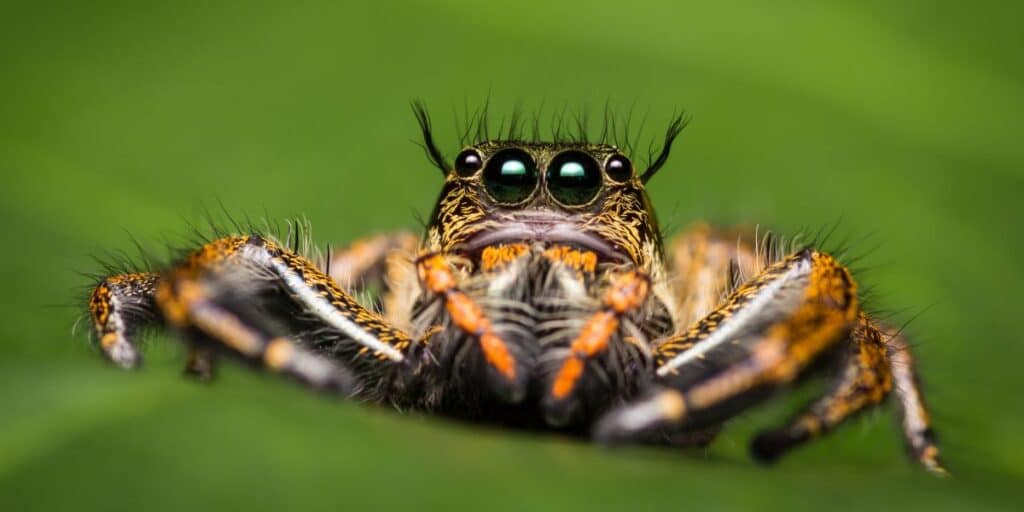野生の小動物の窮状
静かな闘争: 自然の生息地における小動物のジレンマ
広大な自然のタペストリーの中で、ほとんど注目されないものの重要な戦いが毎日繰り広げられています。エコシステムの小さいながらも重要なプレーヤー、 小動物、彼らはその存在自体を脅かす多くの課題に直面しています。穴を掘る小さな野ネズミから勤勉に受粉を行うミツバチまで、これらの生き物はそれぞれ、生命の維持において極めて重要な役割を果たしています。 生態学的バランス。しかし、人間の侵入と天敵による捕食者の組み合わせにより、彼らの窮状は無視されることが多く、伝統的に保護活動はより大型でよりカリスマ的な動物相に有利に進められてきました。
変化に直面した課題: 生息地の喪失と断片化
生息地の喪失は、小動物保護の物語における最大の悪役として立ちはだかります。都市部の拡大、農業、インフラ整備の結果、 破壊と断片化 自然の生息地の様子。これは、これらの生物が生息し繁栄するために利用できるスペースを減少させるだけでなく、移動パターン、繁殖地、食料源を混乱させ、多くの小型種を致命的な危険にさらしています。
- 森林伐採
- 産業農業
- 都市の拡大
目に見えない捕食者: 農薬と汚染物質の役割
目に見える脅威の向こうには、目に見えない捕食者が横たわっています。 農薬と汚染物質。これらの有毒化合物は小動物が生息する生態系に蓄積し、水源や食料供給を汚染します。さらに、小動物はその大きさと代謝率のせいで、これらの汚染物質の影響を非常に受けやすく、致死的な暴露につながり、個体群内の生殖機構と生存機構の微妙なバランスが崩れる可能性があります。
気候危機: 変化の嵐を乗り越える
の亡霊 気候変動 自然界に大きく迫っています。気温や気象パターンの変化は、特定の環境ニーズを持つ小動物種にストレスを与えます。地球の気温が徐々に上昇するため、種は急速に適応する必要がありますが、すべての種がこの課題に対処する能力を備えているわけではありません。激しい嵐や長期にわたる干ばつなどの異常気象の発生はこれらの課題を悪化させ、小動物の更なる避難と個体数の減少につながります。
動きつつある保全活動: 小型動物に対するリスクを軽減する
保護の取り組みは、保護しようとしている小さな生き物と同じくらいダイナミックで適応性のあるものである必要があります。保存・修復を優先した的を絞った取り組み 生息地、汚染物質の使用を管理し、気候変動の影響を考慮することが不可欠です。この包括的なアプローチには、さまざまな戦略が必要です。
- 営巣地と繁殖地の保護
- 生息地の分断を緩和するために野生動物の回廊を作る
- 農薬の使用を管理するための規制の強化
- 気候に適応した保全計画
これらの措置を制定し施行するには、地元コミュニティ、政府、保護団体が連携して取り組む協力的な取り組みが必要です。これらの行動は、小動物がその生態系、ひいては私たち自身の生活の中で果たす役割に対する広範な理解と評価を生み出す公教育の重要なステップと結びついています。
力を合わせる: 市民科学とボランティア活動の力
すべての個人は、地元の環境内で変化に影響を与える力を持っています。の高まりの動き 市民科学 そしてボランティア活動は、一般の人々に自然保護の管理者となる力を与えます。地域の監視プログラム、生息地回復プロジェクト、権利擁護活動を通じて、個人は野生の小動物の生存に大きな影響を与えることができます。さらに、持続可能な生活を促進し、二酸化炭素排出量を削減する取り組みを支援することは、これらの重要な野生動物に間接的に利益をもたらすことができます。
結論として、野生の小動物の窮状に対処することは多面的かつ緊急であり、私たちが共有する地球の健康にとって不可欠です。意識的に一歩を踏み出すことで、 持続可能な実践 私たちは、これらの重要な生き物が自然の生息地で繁栄し続け、私たち全員が依存している複雑で美しい生命の網を維持できるように支援することができます。
小型野生動物の現在の保護戦略

小型野生生物の生態系の動態を理解する
絡み合う生命の網目 小さな野生動物 複雑で外乱に対して非常に敏感です。生態系内のダイナミクスを理解することは、効果的な製品を作成するために最も重要です。 保全戦略。種間の相互作用、食物連鎖における種の役割、生息地の健康に対する種の重要性はすべて、生物多様性保全の複雑なパズルのピースです。
生息地の保存と回復
中心に 保全 小型野生動物に対する取り組みは、自然の生息地の維持と回復です。在来植物の多様性を確保することは、これらの種が繁栄できる安定した環境を育みます。森林再生、湿地の回復、既存の植生の保護などの活動は、小型哺乳類、鳥、昆虫、爬虫類に食料や避難所などの必要な資源を提供する上で非常に重要です。
革新的な繁殖およびリハビリテーション プログラム
人口減少に対抗するために、 繁殖とリハビリテーションのプログラム 希望の光として現れました。絶滅危惧種を絶滅させるために種に特化した戦略が開発されており、多くは回復に成功すると野生に戻されます。これらのプログラムは人口数を増やすだけでなく、緊急事態について国民を教育する上で不可欠なツールとしても機能します。 保全。
野生動物回廊と接続性
生息地の分断は、小型野生動物の生存と繁殖に不可欠な移動ルートを分断する可能性があります。確立する 野生動物の回廊「孤立した生息地を結びつける保護された土地の帯」は、重要性を増している戦略です。これらの回廊は、遺伝的多様性を確保し、環境の変化や人為的妨害に応じた移動を容易にする生命を与えるルートです。
法律と政策による保全
強力な立法の支援がなければ、いかなる保護活動も成り立ちません。制定と施行 法律 重要な生息地を保護し、密猟や違法取引に対する罰則を設けることが基礎となります。さらに、国際条約や協定は、移動性の種や共有生態系に生息する種を保護するために国境を越えた協力を築き上げています。
コミュニティへの参加と教育
情報に基づいた協力的なコミュニティは継続的なビジネスの生命線です 保存の成功。教育プログラムや市民科学プロジェクトを通じて地元住民を巻き込むことが重要です。個人が野生動物と調和して共存するための意識を高め、リソースを提供することで、これらの小さいながらも生命力のある生き物に対する集団的な責任感が育まれます。
気候変動の緩和
気候変動はあらゆる種にとって依然として差し迫った脅威であり、小型野生生物への影響は生息地の変化や生態学的パターンの破壊を通じて現れます。保全戦略には、二酸化炭素排出量の削減と気候の変化に直面したときの回復力の促進に焦点を当て、気候変動を緩和するための対策を統合する必要があります。マングローブ保護や土地利用計画の改善など、生態系に基づいたアプローチは、気候不安定による打撃から野生生物を和らげるのに役立ちます。
統合的保存技術
技術の進歩により、新たな道が開かれました 自然保護活動家。動きを監視する追跡デバイスから生息地を監視するドローンに至るまで、テクノロジーはデータ収集を加速し、小さな野生動物のニーズへの理解を深めます。さらに、高度なマッピング ツールは、保護と管理の重要な領域を特定し、保全活動を合理化するのに役立ちます。
小型野生動物が直面する特有の課題に合わせたこれらの戦略を実施することで、保護コミュニティは、地球の生物多様性の要となるこれらの動物を保護するために、より多くの情報に基づいた多面的なアプローチを展開することができます。活気に満ちた生態系を維持するという共通の目標は、それぞれの戦略を結びつけ、小型種の保全に希望の光をもたらします。
小動物種の保護における課題

の保存 小動物の種 これは生態学的平衡を伴う複雑なダンスであり、詳細な理解の繊細さと集団行動の力の両方を必要とする挑戦です。生態系のバランスを育むことに専念している人々にとって、これらの小さな生き物を保護することは、より大きな生き物を守ることと同じくらい最重要です。げっ歯類、両生類、昆虫などの小動物種は、生物多様性の仕組みの重要な歯車として、受粉、種子の散布、さらには大型動物の食料源として重要な役割を果たしています。
生態学的役割を理解する
小動物種を効果的に保護するには、まず小動物の生態系における役割を認識する必要があります。 生態系。彼らは花粉媒介者として機能し、土壌に通気し、栄養素をリサイクルし、獲物として機能します。たとえば、小型哺乳類は下草の規制に貢献し、それが火災対策や森林の健全性に影響を与えます。両生類は、その存在と健康状態が水生生態系の健全性を反映するバイオマーカーとして見ることができます。それぞれの種は、その大きさに関係なく、生息地の活力と安定性に不可欠です。
生息地の喪失への対処
生息地の喪失は、保全活動において最も恐るべき敵となります。都市化、農業の拡大、林業への介入により、自然の生息地の層が切り取られ、小型種が脆弱なままになっています。これに対処するには、 土地管理 イニシアチブでは、人類の進歩とともに生態学的価値を優先する必要があります。保護地域、野生動物の回廊、持続可能な土地利用戦略は、分断された生息地を復元して接続し、これらの動物が繁栄するスペースを確保するために使用できるツールです。
汚染と気候変動との闘い
- 化学汚染物質 農業や産業からの微生物は水路や土壌に浸透し、餌や繁殖地の汚染を通じて小型種に直接影響を与えます。
- 気候変動により気温が変化し、 降水パターン、小動物の繁殖サイクル、分布、食料の入手可能性に影響を与えます。
保全戦略には、汚染管理の確立や気候変動に直面した生態系の回復力を強化する実践の促進など、これらの変化に対抗するための適応策を組み込む必要があります。
科学研究とモニタリングの推進
奥深い 科学研究 成功した保護戦略を支えています。個体群の傾向の長期モニタリング、遺伝的多様性研究、行動研究により、小型種の必需品やストレスについての洞察が得られます。市民科学への取り組みや学術機関とのパートナーシップにより、データ収集が強化され、情報に基づいた意思決定に必要な幅広い理解が得られます。
コミュニティへの参加と教育の促進
保全は、地域コミュニティの包括的な関与によって成功します。管理精神を奨励するには、次のような方法があります。 教育プログラム 小型種の重要性とその脆弱性を浮き彫りにします。生息地回復プロジェクトや有益なワークショップにコミュニティを参加させることで、知識と行動の間のギャップを埋めることができます。共有された責任が保全の原動力となります。
法的保護と政策の執行
制定・施行 法的保護 小動物種とその生息地を調査することは基本的なステップです。法律は生態系の微妙なバランスを反映する必要があり、政策は生息地の破壊や野生生物の違法取引などの違法行為を阻止する構造化された執行によって裏付けられなければなりません。
結論として、小動物種の保護は、複雑さと課題に包まれた多面的な取り組みです。しかし、それは依然として重要かつ達成可能な目標であることに変わりはありません。科学的調査、生息地の保護、気候への適応性、地域社会の関与、厳格な政策を組み合わせた相乗的なアプローチを通じて、これらの種が表現する複雑な生命のタペストリーを、次世代が称賛し恩恵を受けるために保存することができます。




